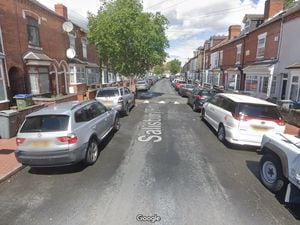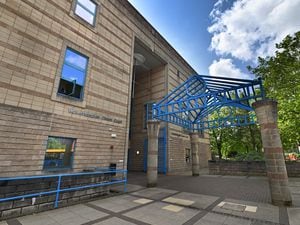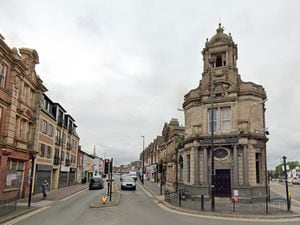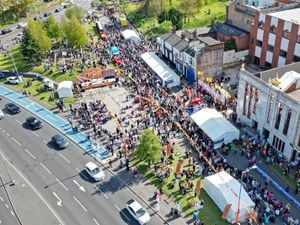Council pushing ahead to buy land around Midland Met hospital for new homes and school
A council is set to push ahead with buying land around the new Midland Met Hospital to make for homes and a primary school.
Watch more of our videos on Shots!
and live on Freeview channel 276
Sandwell Council is looking to spend £20 million to buy several empty and dilapidated industrial units in Grove Lane in Smethwick, next to the site of the huge new Midland Met Hospital.
The council is also planning to buy land off nearby Cranford Street.
The majority of the total £20 million cost would come from the £18.6m given to the borough from the government’s ‘levelling up’ fund last year – plus a minimum of £2 million coming from Sandwell taxpayers.
The council plans to spend the money buying the land, demolishing the buildings and preparing the site for housebuilding where it will then be handed over to developers.
The council said the state of the former industrial buildings and the cost of demolishing them was putting off developers from building homes.
Sandwell Council wants to buy most of the land between Grove Street and Halberton Street – excluding the former Grove Cinema, which is now a kitchen shop, and its adjoining car park – to make way for around 150 homes and a new primary school.
The homes would be made available for shared ownership and ‘affordable’ rent but would not be council social housing.
The council first bid for government funding in 2022 but was unsuccessful only for the regeneration project to be approved in the third round of levelling-up announcements last year.
The council’s bid said: “The investment will change the area’s profile, refocusing from an area characterised by industrial legacy to a residential community. Sites to the east of the Midland Metropolitan University Hospital are dominated by industrial units, some of which are vacant and in a state of disrepair, that are low-rise and between fifty to sixty years old. “Failure to address these sites would be a missed opportunity in the context of surrounding development, resulting in the area’s unprecedented level of investment being surrounded by areas of derelict buildings.”
The move still comes with its risks, according to the cabinet papers, with the bid made using “high-level assumptions” – particularly over the mix of homes and the size of the proposed primary school. The council said there were still some “key limitations” that had prevented a full valuation using the Royal Institution of Chartered Surveyors ‘global standards’ and the council had not had enough information to carry out an “accurate and robust assessment” of the cost of buying the land – saying it was “necessary to make a number of special assumptions.”
The council was rushing to meet a government deadline which it said meant a financial appraisal of the bids could only be done after the bid was made. Agreements were made that the bid could be submitted on the basis that the appraisal would be done in the meantime.
It was agreed by cabinet that the council’s ‘strategic investment unit’ would review the finances of each of the four levelling-up bids – as long as a business case for each project had been drawn up by a specialist consultant.
Asked what the “high-level assumptions” and “key limitations” were by the local democracy reporting service (LDRS), the council said land values, construction costs, property markets and economic conditions have meant changes to the cost of the project to that which was quoted in 2022 when the first – albeit unsuccessful – bid was made.
The council also said that more detailed costs of buying and preparing the land required surveys – such as ground conditions, contamination, archaeological issues, structural conditions and defects – that could not be carried out while the land was still privately owned.
“Some of this information is not readily available and therefore there are limitations as to what the bid has been based upon,” the council added. “However, high-level assumptions have been made based upon the information we do currently hold which has enabled us to estimate the level and assumed cost of remediating the land.
Sandwell Council also said it would need to do further work to determine how much compensation needed to be paid to any existing tenants and landlords.
“There are also a number of interests and tenancies in the properties that need to be fully understood,” the council said. “Further investigations will be required to determine more accurate assessments of the values and the level of compensation required due to other issues such as relocation of specialist machinery, which will only be possible to understand at a later date and which will help in assessing any acquisition and compensation costs.”





